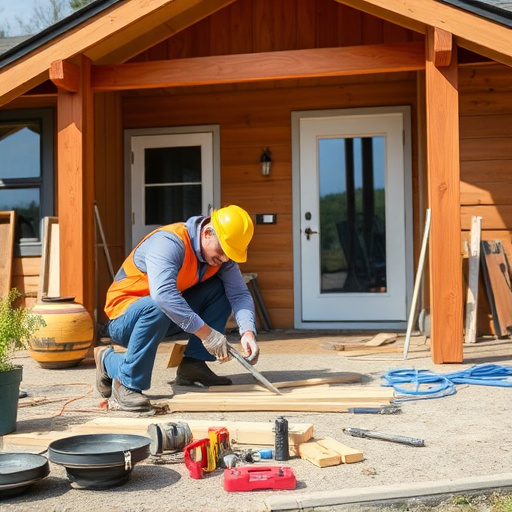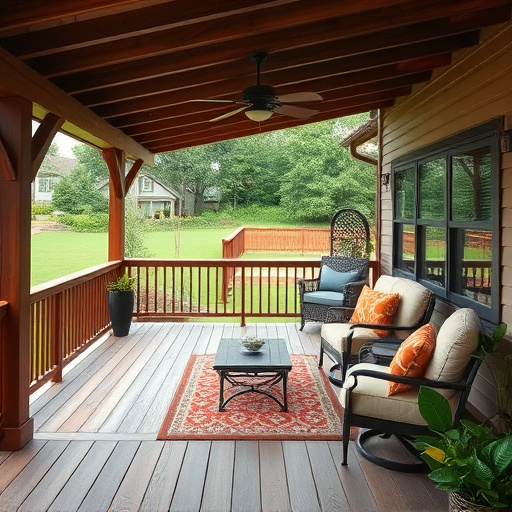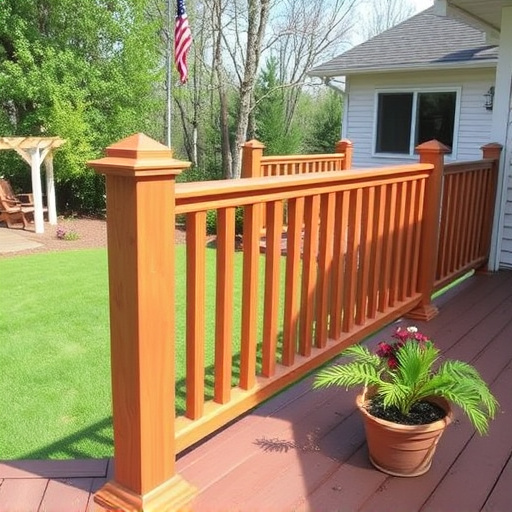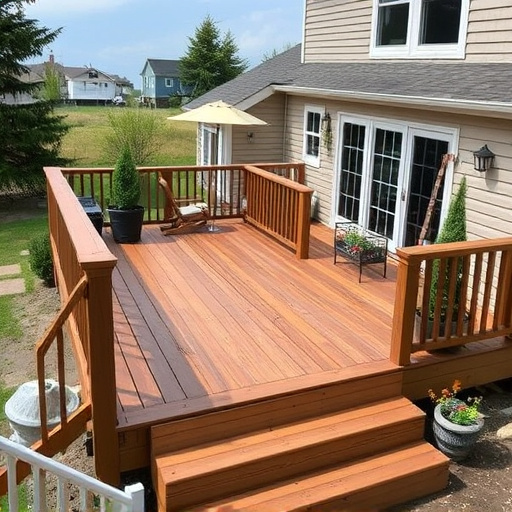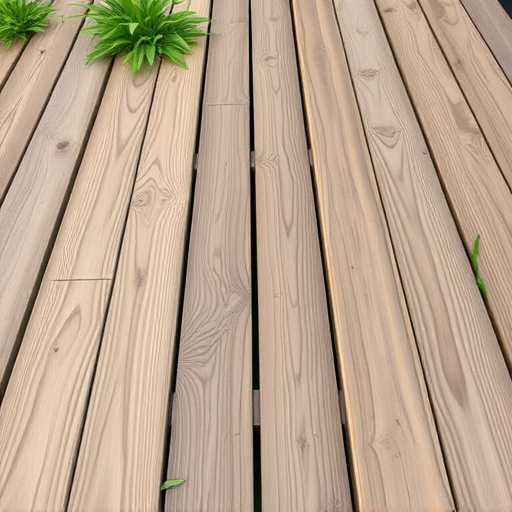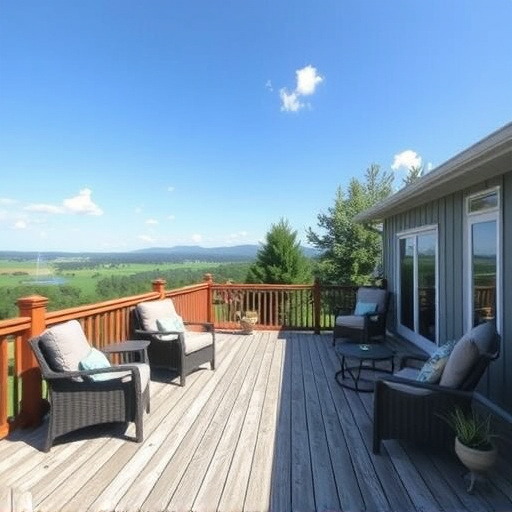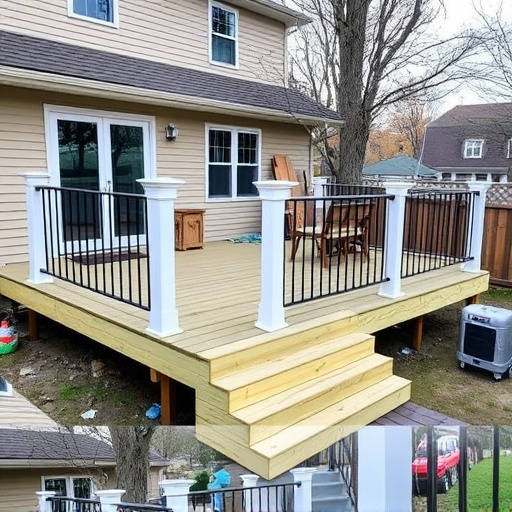Designing a large outdoor deck involves balancing aesthetics with functionality, creating seamless transitions to surrounding landscapes. Key considerations include optimizing space for diverse uses like entertaining and relaxation, incorporating accessibility features, and selecting durable materials for structural integrity. Lighting and roofing solutions enhance evening gatherings while preserving the deck's visual appeal. Thoughtful deck design transforms outdoor spaces into vibrant, practical oases, reflecting a harmonious blend of form and function.
Scale your deck design to fit large outdoor spaces with these expert tips. Understanding the unique scale and space requirements of expansive areas is key, requiring thoughtful planning and strategic design choices. Learn how to create a stunning and functional deck that seamlessly integrates with its environment. From structural considerations to material selection, this guide covers everything you need to transform your outdoor living space, ensuring both beauty and durability in every element of your deck design.
- Understanding the Scale and Space Requirements for Large Outdoor Decks
- Design Techniques to Create a Stunning and Functional Deck Space
- Structural Considerations and Materials for Scaling Up Deck Design
Understanding the Scale and Space Requirements for Large Outdoor Decks
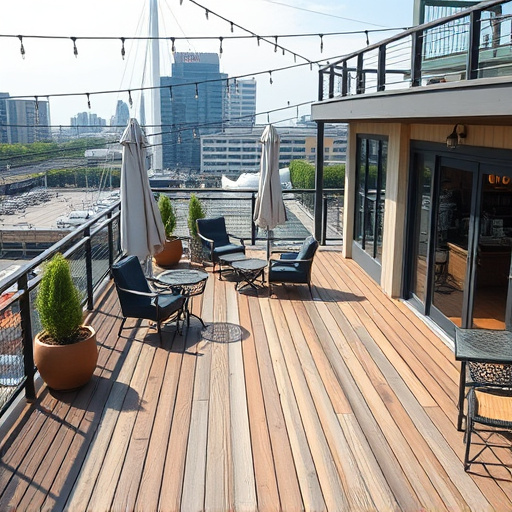
When designing a deck for large outdoor spaces, understanding scale and space requirements is paramount. The size of the deck should be proportional to the surrounding area, ensuring it feels both inviting and integrated into the landscape. Consider the intended use of the space—whether it’s for entertaining guests, relaxation, or both—and design accordingly. A well-planned deck should offer ample seating areas, sufficient circulation spaces, and even outdoor kitchen or dining options if desired. Proper measurements will help in selecting suitable roofing solutions to protect the deck from the elements while maintaining its aesthetic appeal.
In addition to scale, functional considerations for large outdoor decks include accessibility and connectivity with other exterior home improvements. Incorporating features like ramps or elevators can enhance usability, especially for individuals with mobility challenges. Moreover, seamless transitions between the deck and neighboring areas, such as residential siding or other outdoor living spaces, create a cohesive design that enhances the overall value of your property.
Design Techniques to Create a Stunning and Functional Deck Space
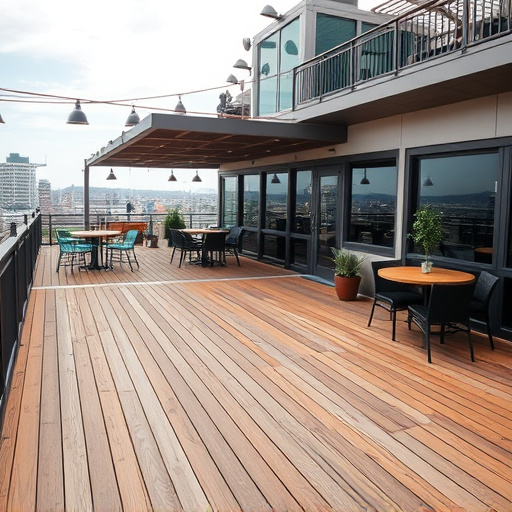
When designing a deck for large outdoor spaces, creating a stunning and functional area requires thoughtful planning and an understanding of various design techniques. One key aspect is to consider the flow and connectivity between the deck and the surrounding environment. Incorporate seamless transitions using similar materials from the deck to the garden or patio, creating a harmonious and cohesive look. For instance, using wooden decking that complements existing outdoor furniture and plants can enhance the overall aesthetic appeal.
Moreover, efficient space planning is essential. Ensure there’s a balance between seating areas, social spaces, and private nooks to cater to different user needs. Incorporate creative features like built-in storage benches or custom-designed pergolas for shade and greenery, adding both functionality and visual interest. Lighting solutions should also be thoughtfully integrated to highlight the deck’s beauty, especially during evening gatherings. And when it comes to roofing considerations, explore options that blend aesthetics with practicality, such as durable, low-maintenance decking materials that can withstand the elements while enhancing your outdoor living space.
Structural Considerations and Materials for Scaling Up Deck Design
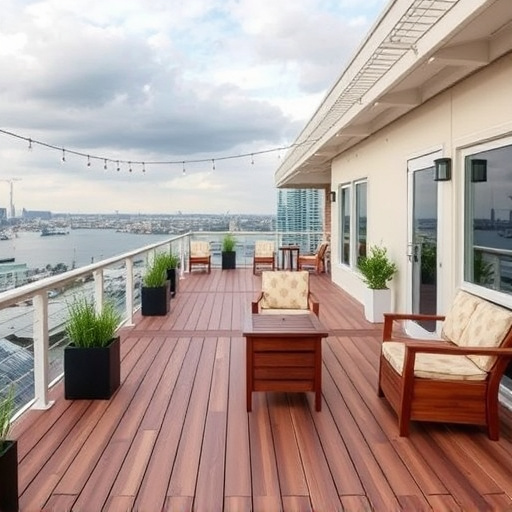
When scaling up deck design for large outdoor spaces, structural considerations become paramount. As the size increases, so does the load the structure must bear—from people standing to furniture and other fixtures. Reinforced concrete, steel beams, and heavy-duty joists are essential components to ensure stability and safety, especially when considering potential weather events like storms that could cause significant damage. Regular deck inspections and prompt storm damage repair are crucial to maintain these structures’ integrity over time.
Choosing the right materials is equally vital for sustainable and low-maintenance decking solutions. Opting for durable materials such as treated wood or composite boards can reduce the need for frequent repairs and replacement, similar to robust roofing solutions or well-maintained siding and gutters. These choices not only save on costs but also enhance the overall aesthetic appeal of your outdoor living space.
Scaling up deck design for large outdoor spaces requires careful consideration of structural integrity, functional layout, and aesthetic appeal. By understanding space requirements, employing creative design techniques, and selecting suitable materials, you can transform any outdoor area into a stunning and inviting deck. Incorporating these strategies ensures your deck design not only looks breathtaking but also stands the test of time, becoming a central hub for outdoor living and entertainment.







